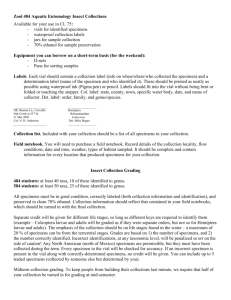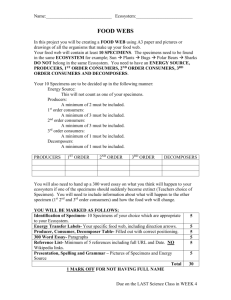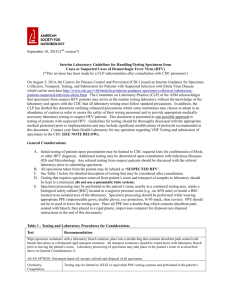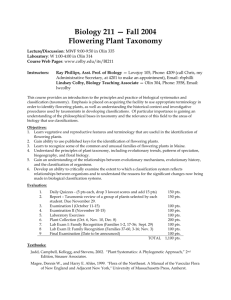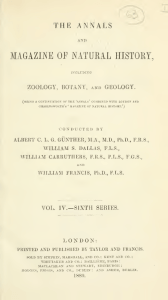Plant Classification Assignment: Biodiversity & Taxonomy
advertisement
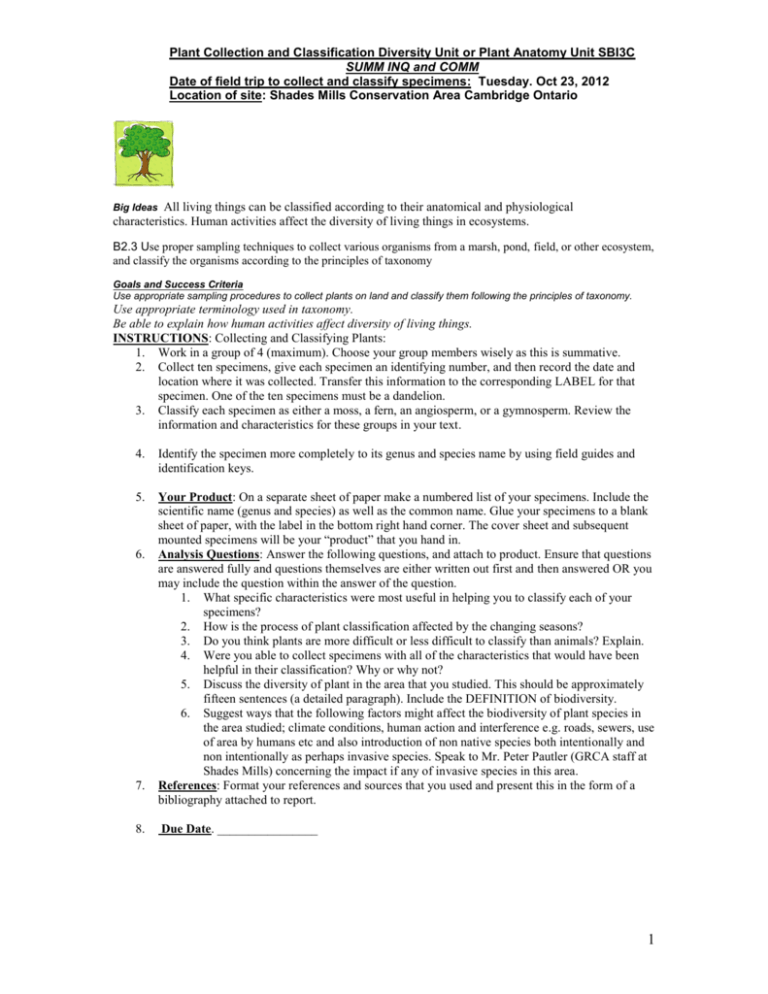
Plant Collection and Classification Diversity Unit or Plant Anatomy Unit SBI3C SUMM INQ and COMM Date of field trip to collect and classify specimens: Tuesday. Oct 23, 2012 Location of site: Shades Mills Conservation Area Cambridge Ontario All living things can be classified according to their anatomical and physiological characteristics. Human activities affect the diversity of living things in ecosystems. Big Ideas B2.3 Use proper sampling techniques to collect various organisms from a marsh, pond, field, or other ecosystem, and classify the organisms according to the principles of taxonomy Goals and Success Criteria Use appropriate sampling procedures to collect plants on land and classify them following the principles of taxonomy. Use appropriate terminology used in taxonomy. Be able to explain how human activities affect diversity of living things. INSTRUCTIONS: Collecting and Classifying Plants: 1. Work in a group of 4 (maximum). Choose your group members wisely as this is summative. 2. Collect ten specimens, give each specimen an identifying number, and then record the date and location where it was collected. Transfer this information to the corresponding LABEL for that specimen. One of the ten specimens must be a dandelion. 3. Classify each specimen as either a moss, a fern, an angiosperm, or a gymnosperm. Review the information and characteristics for these groups in your text. 4. Identify the specimen more completely to its genus and species name by using field guides and identification keys. 5. Your Product: On a separate sheet of paper make a numbered list of your specimens. Include the scientific name (genus and species) as well as the common name. Glue your specimens to a blank sheet of paper, with the label in the bottom right hand corner. The cover sheet and subsequent mounted specimens will be your “product” that you hand in. Analysis Questions: Answer the following questions, and attach to product. Ensure that questions are answered fully and questions themselves are either written out first and then answered OR you may include the question within the answer of the question. 1. What specific characteristics were most useful in helping you to classify each of your specimens? 2. How is the process of plant classification affected by the changing seasons? 3. Do you think plants are more difficult or less difficult to classify than animals? Explain. 4. Were you able to collect specimens with all of the characteristics that would have been helpful in their classification? Why or why not? 5. Discuss the diversity of plant in the area that you studied. This should be approximately fifteen sentences (a detailed paragraph). Include the DEFINITION of biodiversity. 6. Suggest ways that the following factors might affect the biodiversity of plant species in the area studied; climate conditions, human action and interference e.g. roads, sewers, use of area by humans etc and also introduction of non native species both intentionally and non intentionally as perhaps invasive species. Speak to Mr. Peter Pautler (GRCA staff at Shades Mills) concerning the impact if any of invasive species in this area. References: Format your references and sources that you used and present this in the form of a bibliography attached to report. 6. 7. 8. Due Date. ________________ 1




